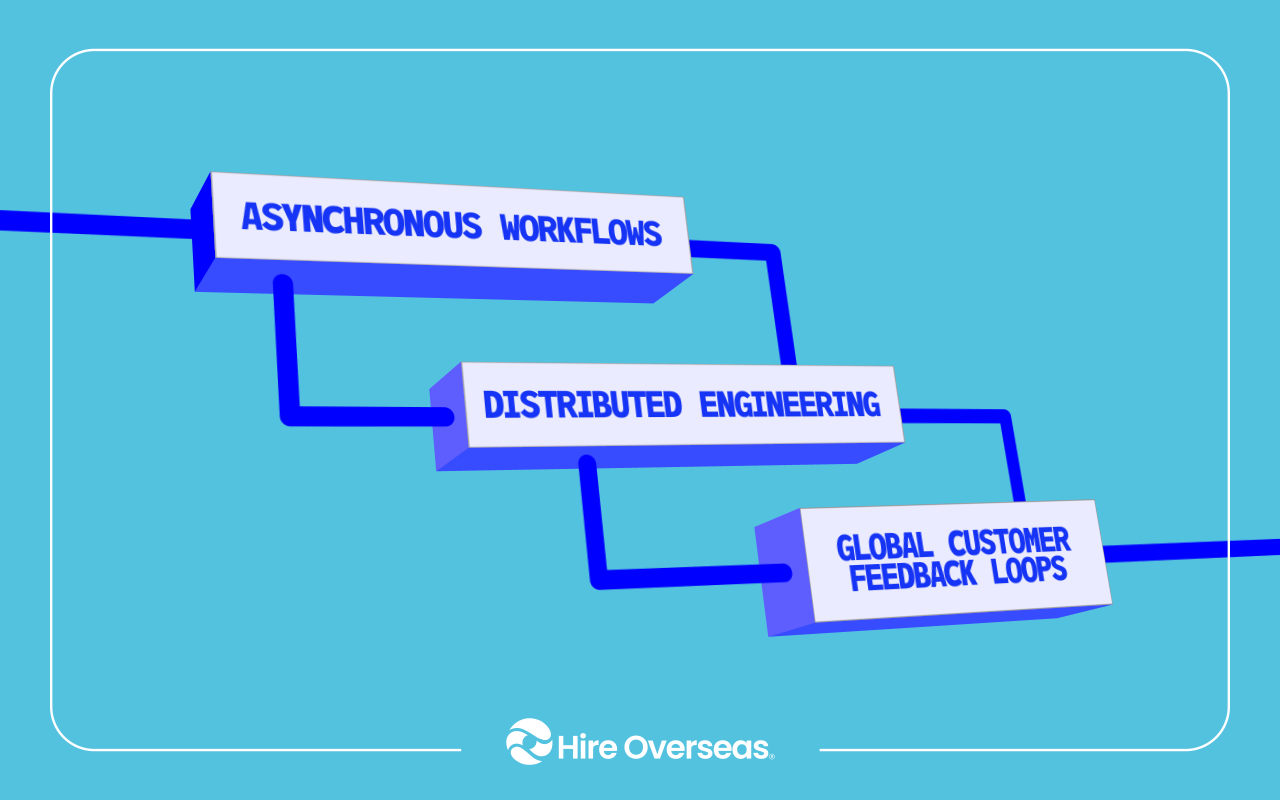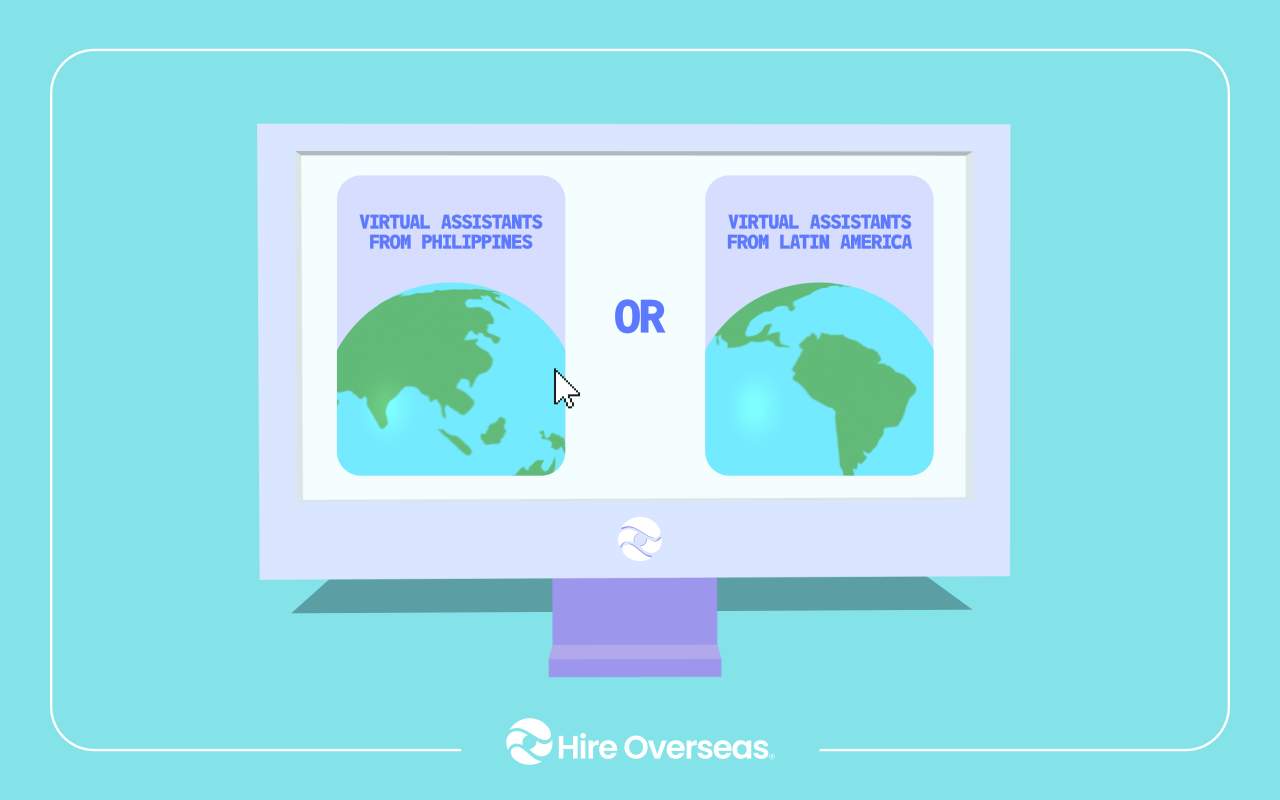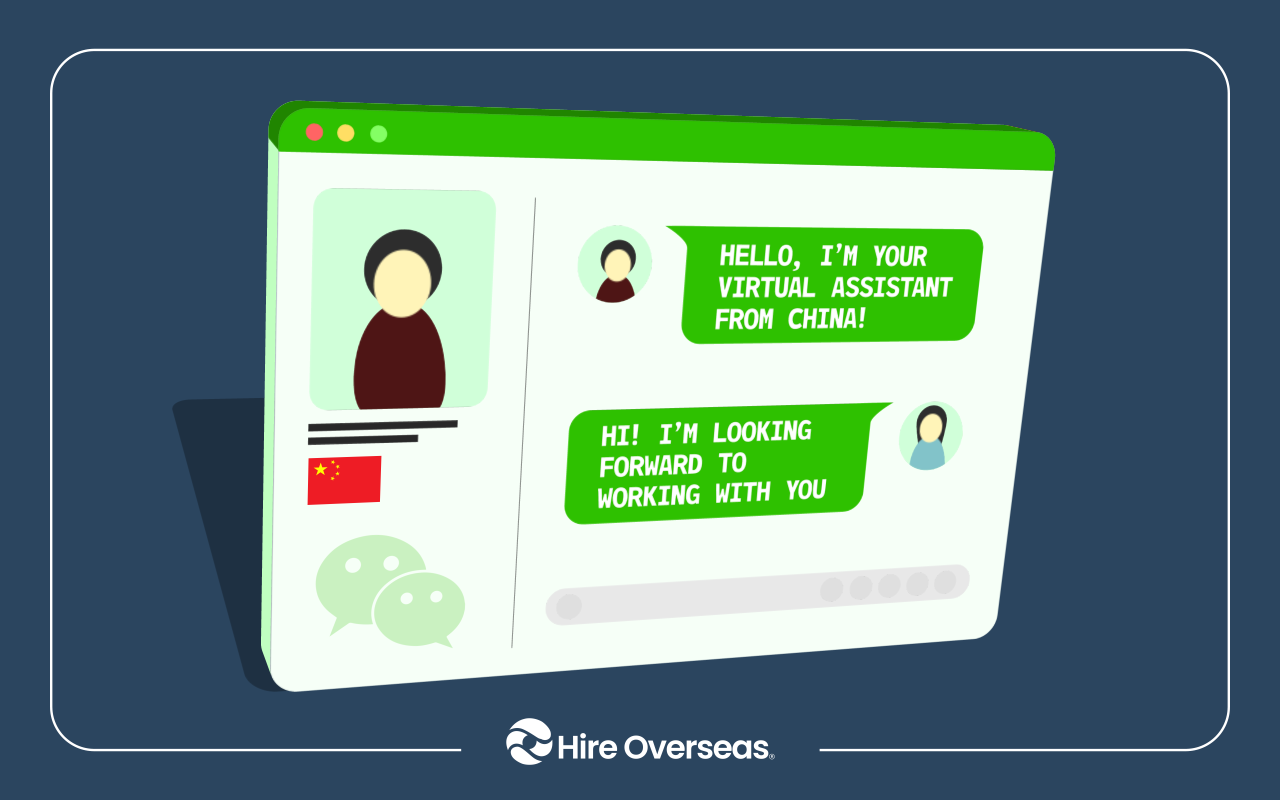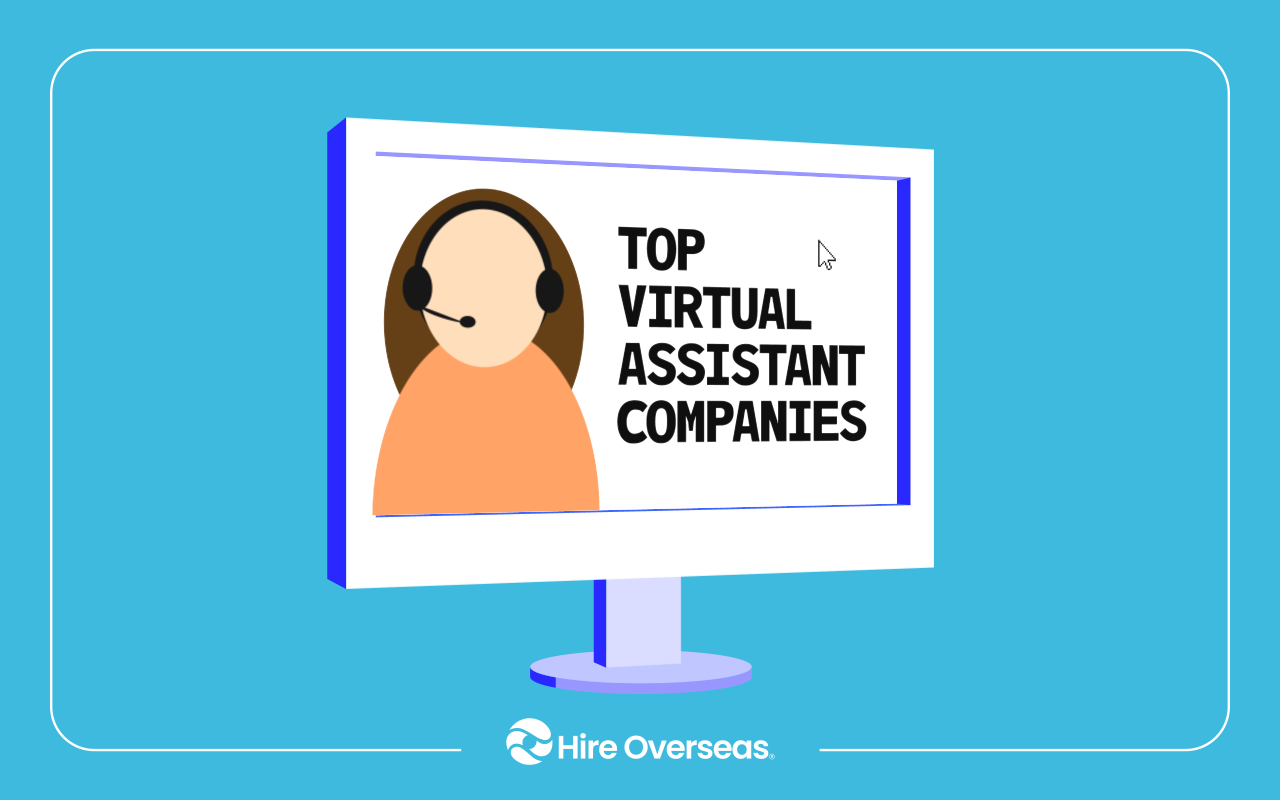The Employer Guide to Hiring Remote Product Managers Who Actually Deliver

Building and scaling digital products no longer depends on having everyone in the same office. Distributed teams are now standard, and companies that embrace global product talent consistently outperform those that restrict hiring to a single location. This shift has made the remote product manager one of the most valuable hires for businesses that want speed, specialization, and reliable execution.
But hiring a remote PM who actually delivers requires more than just browsing remote product manager jobs listings. Employers need a hiring strategy that identifies strong operators, filters out weak communicators, and ensures alignment across distributed teams. This guide shows you how to do exactly that.
Why Businesses Hire Remote Product Managers
Companies aren’t just hiring remote PMs because remote work is popular. They’re prioritizing this role because remote product managers solve real operational challenges that onsite teams can’t address efficiently.
Products Now Ship Across Markets, Not Just One Region
Modern products launch globally from day one, but most in-office PMs only understand one market. Remote hiring lets employers access PMs with experience in the markets they want to grow.
Example: A company selling in the U.S., EU, and APAC can hire a PM with local user insights, compliance awareness, and data-driven regional understanding.
The Rise of Distributed Engineering Makes Remote PMs Essential
Engineering, design, and QA teams are already distributed. A remote product manager who works the same way removes bottlenecks like delayed approvals, misaligned priorities, and unclear decision-making that often occur with onsite PMs managing remote teams.
Employers Need PMs Who Can Operate in Asynchronous Workflows
In global companies, not everyone works the same hours. Remote PMs are skilled at running asynchronous sprints, writing clear specs, and driving progress without needing real-time meetings—which significantly increases velocity.
Specialized Product Skills Are Rare Locally but Readily Available Globally
Most local markets can’t meet niche product demands, especially roles such as:
- technical product manager jobs remote
- data product manager jobs remote
- AI product manager jobs remote
- digital product manager jobs remote
Hiring remotely gives employers access to PMs who already have the exact domain experience needed, reducing onboarding time and increasing product quality.
Employers Want Faster Hiring Without Quality Tradeoffs
Traditional hiring for senior PMs can take 3–6 months because local talent is limited. Remote hiring instantly widens the candidate pool for roles like senior product manager remote jobs, associate product manager remote jobs, and entry level product manager jobs remote, cutting time-to-hire in half.
Read more: Learn how companies streamline global hiring in our guide on how to hire remote employees.
Remote PMs Reduce Costs Without Reducing Expertise
Companies can hire senior-level talent in lower-cost regions to get Silicon Valley–level product expertise without local salary premiums. This lets employers reinvest savings into engineering, design, or product marketing.
Global Customer Feedback Requires Around-the-Clock Product Operations
Remote PMs allow companies to:
- respond to customer issues faster
- gather continuous user insights
- test features in multiple regions
- support 24/7 workflows
This is especially valuable in fast-moving SaaS, fintech, AI, and healthcare products.
Remote-First Companies Need PMs Who Can Lead Without Proximity
The shift to remote-first organizations requires PMs who can:
- align stakeholders without in-person meetings
- lead cross-functional teams virtually
- manage product roadmap planning remotely
- maintain accountability with distributed teams
These skills are harder to find in traditional, office-only PMs.
Read more: If you’re exploring the broader benefits and challenges of distributed workforces, you may also like our guide on managing remote teams.
What Remote Product Managers Actually Do for Your Business

A high-performing remote product manager is not just a coordinator—they’re the engine that keeps distributed product teams aligned, productive, and constantly moving forward. Here’s what they deliver inside a remote-first organization and why it matters for your business:
Turn Ambiguous Business Goals Into Clear, Executable Roadmaps
Remote PMs translate broad objectives into specific roadmap items, sprint plans, and feature requirements.
They ensure engineering, design, and marketing all operate with the same priorities and definitions of success.
Business impact: Projects move faster because everyone understands the exact direction and outcomes expected.
Keep Distributed Teams Aligned Without Heavy Meeting Load
Instead of relying on constant Zoom calls, remote PMs use structured documentation to maintain alignment:
- clear product specs
- roadmap updates
- decision logs
- stakeholder briefs
Impact on your business: Teams stay coordinated across time zones, reducing delays caused by miscommunication.
Manage Execution Through Remote-Ready Workflows
Remote PMs run sprints, refine backlogs, handle cross-functional coordination, and ensure engineering teams always know what to build next.
Business impact: Development cycles become more predictable, and teams hit deadlines more consistently.
Drive Product Discovery Virtually
They gather user insights, validate assumptions, and test ideas without needing in-person interviews or workshops.
This includes asynchronous prototype testing, global user research, and virtual feedback sessions.
Business impact: You validate ideas sooner and avoid building features that don’t deliver value.
Facilitate Remote Prod
Remote PMs keep design work moving by coordinating reviews, documenting decisions, and ensuring designers have the context they need.
Business impact: UX and design iterations happen quickly, keeping the product release schedule on track.
Improve Engineering Productivity Across Time Zones
They remove blockers, clarify technical requirements, outline edge cases, and keep communication tight so developers never get stuck waiting for direction.
Business impact:: Engineering productivity increases because teams can operate independently and efficiently.
Provide Strong Virtual Product Leadership
Remote PMs influence decisions, manage priorities, and keep stakeholders aligned—all without needing in-person interactions.
They lead through clarity, organization, and consistent communication.
Business impact: Stakeholders stay confident in the product direction and teams execute with fewer interruptions.
Manage the Entire Product Lifecycle Remotely
From ideation to launch, remote PMs handle:
- release preparation
- QA coordination
- GTM alignment
- launch updates
- post-launch analysis
Business impact: Releases run smoother, issues are caught earlier, and each launch builds on measurable learnings.
Maintain Accountability Through Documentation and Data
Remote PMs rely on clear metrics, dashboards, and structured updates—not hallway conversations—to keep execution on track.
Business impact: Leaders get full visibility into progress and performance without chasing updates.
Build Products That Scale Globally
Remote PMs bring experience working across regions, understanding customer nuances, and coordinating across international teams.
Business impact: The product evolves faster and enters new markets with fewer operational challenges.
The Types of Remote Product Managers Companies Hire (and When Your Business Needs Each One)
Not every product manager serves the same purpose. Depending on your stage, industry, and product complexity, you may need different types of remote PMs. Here’s a clear breakdown to help employers understand which role fits their needs.
Associate and Early-Career Product Managers
Ideal for: fast-growing teams that need execution support and better organizational structure.
These PMs handle foundational tasks such as:
- backlog refinement
- drafting requirements
- coordinating user feedback
- QA support
- documenting processes
Often hired through associate product manager remote jobs or entry level product manager jobs remote, they help senior staff maintain momentum and reduce bottlenecks.
The strategic edge: Keeping the product engine organized so senior PMs and engineering leads can focus on higher-level strategy.
Core Product Managers
Ideal for: established teams that need a dedicated PM to own roadmap execution.
These PMs handle:
- sprint planning
- roadmap updates
- cross-functional alignment
- feature prioritization
- user discovery
- data-driven decision-making
The strategic edge: They become the day-to-day owner of delivery, ensuring engineering, design, and stakeholders stay aligned.
Specialized Product Managers
Ideal for: companies operating in niche domains that require deep technical or industry expertise.
Common roles include:
- technical product manager jobs remote (APIs, infrastructure, integrations)
- AI product manager jobs remote (ML pipelines, AI-driven features)
- data product manager jobs remote (analytics products, data platforms)
- digital product manager jobs remote (UX-heavy or customer-facing digital experiences)
- product marketing manager remote jobs (GTM, messaging, positioning)
- healthcare product manager jobs remote (HIPAA, compliance-driven products)
remote SaaS product manager jobs (subscription models, retention, onboarding)
The strategic edge: Reducing ramp time and avoiding costly mistakes by bringing proven domain expertise on day one.
Senior and Leadership-Level Product Managers
Ideal for: companies that need strategic direction, multi-team coordination, or entire product-line ownership.
These PMs—often found through senior product manager remote jobs or principal product manager jobs remote—handle:
- portfolio-level planning
- cross-team product strategy
- executive stakeholder alignment
- mentoring junior PMs
- long-term roadmap vision
The strategic edge: Strengthening product direction and ensuring every team contributes to unified business outcomes.
Fractional and Part-Time Product Managers
Ideal for: startups, early-stage teams, or companies testing new product verticals.
Employers often use part time product manager jobs remote when they need:
- senior-level guidance without full-time cost
- temporary leadership during transitions
- short-term product strategy support
- rapid validation of a new idea
The strategic edge: High-leverage expertise at a lower budget, especially during uncertain or exploratory phases.
Global Product Managers
Ideal for: companies scaling across multiple regions or customer segments.
These PMs support:
- international product adaptation
- localization strategy
- global customer research
- multi-market feature rollout
The strategic edge: Helping businesses expand confidently into new markets with regionally aligned features and strategy.
[blog-cta_component]
Hire Overseas Insider: The Key Qualities Employers Should Look For in Remote PMs

At Hire Overseas, we’ve seen that the strongest remote PMs succeed not because of credentials, but because they excel in environments that demand clarity, structure, and disciplined communication. Here’s what to look for when assessing candidates:
Asynchronous Communication Excellence
Remote PMs must be able to document decisions, write clear requirements, and communicate priorities without relying on constant meetings.
When evaluating candidates, look for:
- well-structured written responses
- clear, logical explanations
- the ability to break complex ideas into simple steps
- confidence communicating without over-talking or over-explaining
Hire Overseas Tip: PMs who thrive remotely typically treat documentation as part of their leadership, not as an afterthought.
Ownership and Autonomy
High-performing remote product managers don’t wait for direction—they anticipate needs and keep initiatives moving.
Look for signs of:
- independent decision-making
- examples where they unblocked teams without being asked
- comfort working with minimal supervision
- experience leading projects end-to-end
Hire Overseas Tip: Ask candidates how they’ve made decisions with incomplete information. Strong PMs show judgment, not hesitation.
Experience With Remote Product Design Collaboration
Remote PMs must work with designers asynchronously, often without real-time meetings. They should excel at:
- providing clear design briefs
- reviewing prototypes and user flows with context-rich feedback
- coordinating revisions across time zones
- using tools like Figma, Miro, and Loom to guide designers
Hire Overseas Tip: The best remote PMs treat designers like strategic partners, not a task delivery function.
Strong Product Lifecycle Management Discipline
Remote environments amplify the need for structure. PMs must understand each stage of the product lifecycle and keep teams aligned throughout.
Evaluate their ability to:
- plan releases
- manage stakeholder expectations
- coordinate QA
- track success metrics
- refine product decisions using data
Hire Overseas Tip: Look for PMs who reference process, not just outcomes. Strong PLM is a predictable pattern, not luck.
Ability to Lead Cross-Functional Teams Virtually
Remote PMs lead through influence, clarity, and consistent communication—not proximity.
They should demonstrate:
- experience managing engineering, design, marketing, and support remotely
- confidence navigating conflicting priorities
- skill in aligning teams across cultures and time zones
- an ability to foster accountability without micromanaging
Great remote PMs don’t push people—they create clarity that pulls teams in the same direction.
Read more: If you’re considering remote talent from Southeast Asia, discover why companies choose the Philippines in our post on hiring remote workers in the Philippines
Best Practices for Managing Remote Product Managers
Once you’ve hired a strong remote product manager, the next step is creating an environment where they can perform at a high level. Remote PMs thrive in systems built for clarity, structure, and predictable collaboration. Here’s how employers can support them effectively:
1. Keep Workflows Simple and Transparent
Complex processes slow remote teams down. Use clear, streamlined workflows for:
- sprint planning
- backlog updates
- requirement changes
- stakeholder reviews
Remote PMs move faster when decision paths are straightforward and expectations are unambiguous.
2. Standardize Your Tool Stack
Remote PMs depend on consistent tools to coordinate teams and maintain alignment. Most companies use tools like:
- Jira or Asana for sprints
- Notion or Confluence for documentation
- Slack or Teams for communication
- Productboard or Aha! for roadmapping
A unified tool stack prevents misalignment and keeps execution predictable.
3. Maintain Tight Stakeholder Alignment
Remote PMs need predictable communication from leadership. Schedule recurring alignment points such as:
- monthly roadmap reviews
- bi-weekly strategic check-ins
- cross-functional planning meetings
- This prevents last-minute changes, shifting priorities, or conflicting expectations.
4. Prioritize Documentation as a Team Habit
Remote product management depends on written clarity. Encourage teams to document:
- decisions
- assumptions
- requirements
- meeting summaries
- product insights
The PM becomes more effective when the entire organization operates with shared visibility.
5. Create Time-Zone-Friendly Collaboration Rhythms
Structure workflows to support distributed teams. This may include:
- overlapping hours for key discussions
- async feedback cycles
- recorded walkthroughs
- clearly defined handoff times
This allows the PM to maintain momentum even when working across multiple time zones.
6. Empower Them to Make Decisions
Remote PMs move faster when empowered to make day-to-day product calls.
Give them ownership of:
- scope decisions
- priority adjustments
- sprint commitments
- early-stage validations
Empowered PMs reduce bottlenecks and drive execution without constant approvals.
7. Set Clear Success Metrics
Remote PMs work best when they have measurable, unambiguous goals. Define success around:
- delivery timelines
- product performance metrics
- customer outcomes
- cross-functional efficiency
- roadmap accuracy
This ensures accountability while giving the PM control over how to achieve results.
Your Next Product Advantage Will Come From Remote Talent
Great products aren’t built by proximity—they’re built by clarity, expertise, and a team that can execute consistently. Remote product managers bring all three. They help your organization move faster, stay aligned across time zones, and tap into global expertise that local hiring simply can’t match.
As more companies shift to distributed product development, the organizations that invest in strong remote PMs will outperform those that stay limited by geography. If you want a product team that delivers with precision and momentum, this is the moment to act.
Book a Free Consultation and see how Hire Overseas helps companies build high-performing remote product teams.
Your competitive advantage is only one remote hire away.
FAQs About Hiring Remote Product Managers
How is hiring a remote product manager different from hiring an in-office PM?
While the core skill set is similar, hiring a remote PM requires deeper evaluation of written communication, asynchronous collaboration ability, self-management, and documentation habits. Remote PMs must operate autonomously without relying on hallway conversations or constant meetings, so employers should prioritize candidates with strong async communication samples and proven experience working in distributed teams
How much should we pay a remote product manager?
Compensation varies significantly based on region, experience level, and role complexity. Employers typically benchmark pay against:
- the candidate’s local market
- the seniority required (associate PM, mid-level PM, senior PM, or product lead)
- specialization (e.g., AI, data, API/integrations, healthcare, SaaS)
Remote hiring allows companies to maintain competitive pay while saving 40–70% compared to equivalent U.S. salaries.
Hire Overseas is particularly cost-effective—most companies save up to 70% on total compensation while still hiring senior-level product talent with global experience.
What red flags should employers watch for when interviewing remote PM candidates?
Common warning signs include:
- vague explanations of past work
- heavy reliance on meetings for alignment
- difficulty giving structured examples
- unclear decision-making processes
- lack of end-to-end ownership experience
- slow or inconsistent communication during the hiring process
Strong remote PMs naturally demonstrate clarity, organization, and responsiveness.
Can a remote product manager lead multiple product teams at once?
Yes, senior or principal-level remote PMs often manage multiple squads—especially when supported by associate PMs or specialized PMs. However, success depends on:
- product complexity
- team maturity
- the company’s documentation culture
whether the PM owns strategy, execution, or both
Overloading a PM reduces roadmap clarity, so capacity should be assessed carefully.
What industries benefit most from hiring remote product managers?
Remote PMs are especially valuable in industries requiring global expertise or rapid iteration, including:
- SaaS
- fintech and payments
- AI/ML products
- healthcare and healthtech
- martech and adtech
- ecommerce platforms
- logistics and operations tech
Any industry with global users or distributed teams benefits from remote-first product leadership.
Unlock Global Talent with Ease
Hire Overseas streamlines your hiring process from start to finish, connecting you with top global talent.




